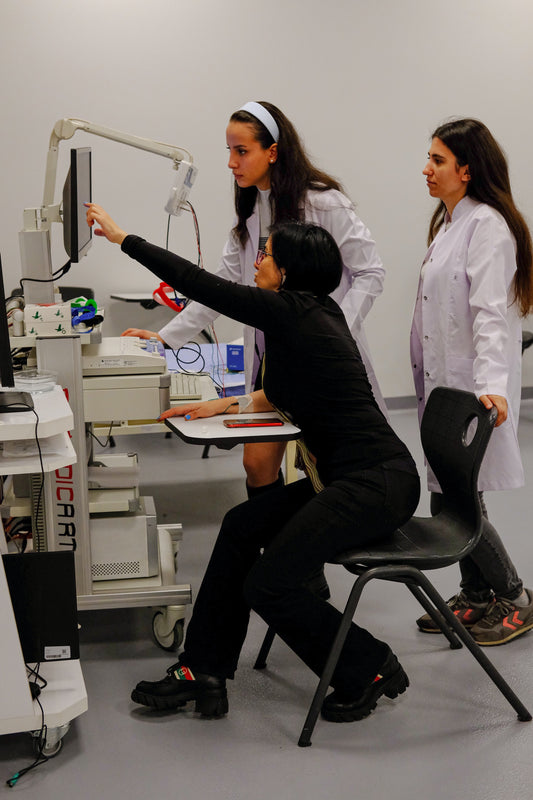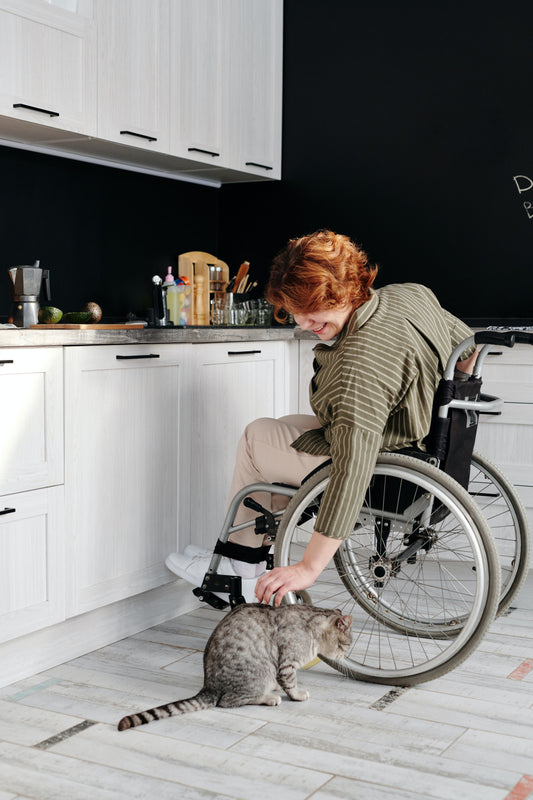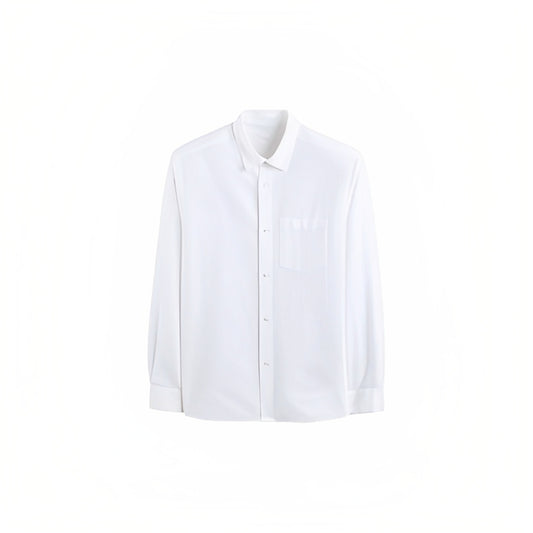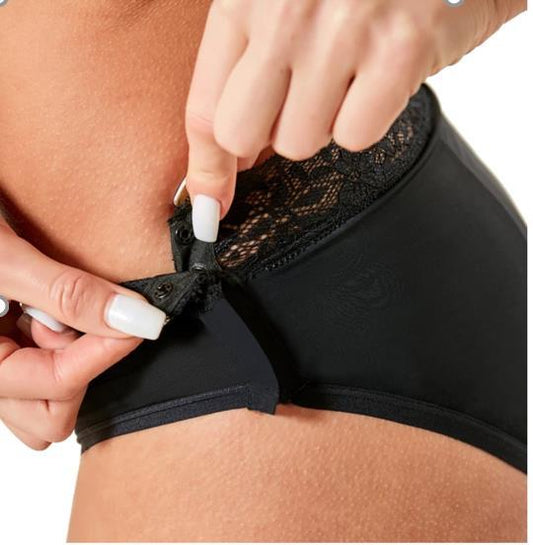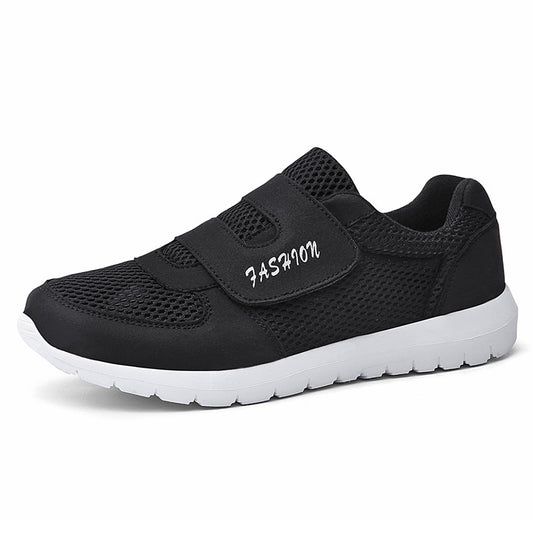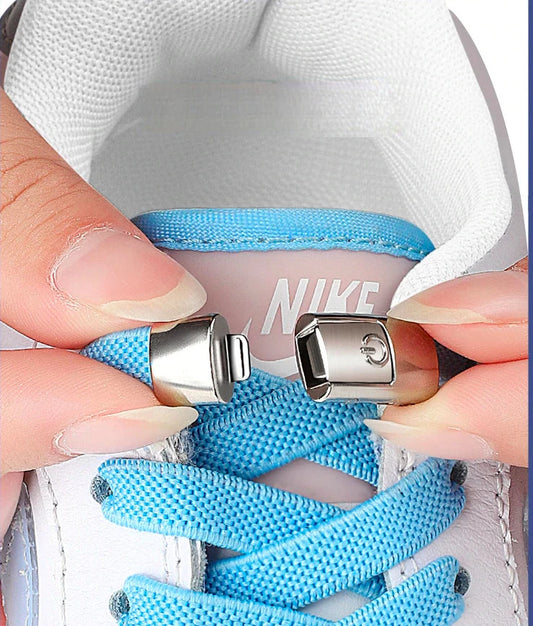Lou Hamer (adaptive clothing)
Articles
Collapsible content
The Importance of Adaptive Clothing: Empowering Inclusivity and Accessibility
In today's rapidly evolving world, inclusivity and accessibility have become crucial values for building a more equitable society. One area where these principles are gaining increasing recognition is in the realm of fashion through the emergence of adaptive clothing. Designed to cater to the unique needs of individuals with disabilities or mobility challenges, adaptive clothing plays a pivotal role in promoting independence, dignity, and self-expression. This article delves into the significance of adaptive clothing, highlighting its impact on fostering inclusivity, improving daily lives, and reshaping the fashion industry as a whole.
Promoting Inclusivity and Empowering Individuals
Adaptive clothing holds the power to dismantle barriers and bridge the gap between fashion and function. By considering the diverse needs of individuals with disabilities, it paves the way for inclusivity, ensuring that everyone can enjoy the freedom of personal style. These garments feature innovative design elements such as magnetic closures, Velcro fastenings, or adjustable features, allowing individuals to dress and undress with greater ease and independence. Adaptive clothing also takes into account factors like sensory sensitivities and skin conditions, providing softer materials and tagless options that enhance comfort and reduce irritation.
By offering functional and stylish options for people with disabilities, adaptive clothing helps to instill a sense of confidence and empowerment. Individuals can express their personal style, enhancing their self-esteem and enabling them to participate more fully in social activities and professional environments. Breaking away from the limited choices traditionally available, adaptive clothing celebrates diversity and ensures that fashion is truly accessible to all.
Improving Daily Lives and Enhancing Comfort
The impact of adaptive clothing extends beyond the realm of fashion. It significantly improves the daily lives of individuals with disabilities by addressing their specific needs and challenges. By incorporating features like easy-to-use closures, adjustable waistbands, and seamless access points, adaptive clothing simplifies the process of dressing and undressing, making it more efficient and less physically demanding. This not only enhances independence but also saves valuable time and energy, enabling individuals to focus on other aspects of their lives.
Furthermore, adaptive clothing plays a crucial role in addressing the practical requirements associated with medical devices, braces, or prosthetics. These garments are specifically designed to accommodate such devices without compromising style or comfort. By integrating discreet openings, strategically placed seams, and stretchable fabrics, adaptive clothing ensures a seamless fit, enabling individuals to wear their necessary equipment with ease and confidence.
Reshaping the Fashion Industry
The emergence of adaptive clothing has also sparked a transformation within the fashion industry itself. Increasingly, fashion brands are recognizing the untapped potential of this market and the need to cater to a wider audience. As a result, we are witnessing a positive shift in the industry, with mainstream designers and retailers actively collaborating with adaptive clothing brands or creating their own inclusive lines.
This newfound collaboration promotes greater representation and diversity within the fashion world. It encourages the design community to think inclusively, leading to more innovative and universally functional designs. By integrating adaptive clothing into their offerings, fashion brands are not only tapping into a previously underserved market but also dismantling the stereotypes and stigmas surrounding disabilities, encouraging a more inclusive society at large.
Adaptive clothing stands as a symbol of progress and inclusivity, empowering individuals with disabilities to navigate the world with greater independence and confidence. By addressing the unique needs and challenges faced by people with disabilities, this innovative form of fashion enhances accessibility, promotes self-expression, and improves daily lives. Moreover, its presence in the fashion industry is reshaping traditional notions of beauty and creating a more inclusive environment for all. As we embrace adaptive clothing, we take a significant step forward in building a world that celebrates diversity and champions the rights of every individual.
Unveiling Adaptive Clothing: Fashion That Embraces Functionality and Inclusion
In recent years, the fashion industry has witnessed a significant transformation with the rise of adaptive clothing. Designed to cater to the unique needs and challenges of individuals with disabilities or mobility impairments, adaptive clothing combines style and functionality, making fashion more accessible and inclusive than ever before. This article aims to provide an in-depth understanding of adaptive clothing, exploring its purpose, features, and the positive impact it has on the lives of people with diverse abilities.
Defining Adaptive Clothing
Adaptive clothing refers to garments specifically designed to meet the requirements of individuals with disabilities, limited mobility, or medical conditions. Unlike traditional clothing, adaptive garments incorporate innovative design elements that simplify the process of dressing and undressing, enhance comfort, and accommodate assistive devices. These features are carefully integrated without compromising on style, allowing individuals to express their personal taste and maintain their dignity.
Features of Adaptive Clothing
Easy Closure Systems: Adaptive clothing often incorporates alternative closure systems such as magnetic closures, Velcro fastenings, or large buttons. These elements replace traditional small buttons or zippers, making it easier for individuals with limited dexterity or mobility to manipulate the closures independently.
Adjustable and Elastic Components: Elastic waistbands, drawstrings, and adjustable straps are common features in adaptive clothing. These allow for easy adjustments and ensure a comfortable fit that can accommodate fluctuations in body shape or the need to accommodate medical devices.
Open-Back or Wrap Designs: Adaptive clothing may feature open-back or wrap designs, allowing for ease of dressing and undressing without the need for excessive bending or twisting. These designs are particularly beneficial for individuals with limited mobility or those who require assistance with dressing.
Sensory Considerations: Many adaptive clothing options take into account sensory sensitivities by utilizing softer materials, tagless labels, and seamless construction to minimize irritation or discomfort.
Roomy Silhouettes and Stretchable Fabrics: Adaptive clothing often incorporates roomier silhouettes and stretchable fabrics to ensure a comfortable fit and freedom of movement. This is especially important for accommodating assistive devices, such as prosthetics or braces.
The Impact of Adaptive Clothing
Enhanced Independence: Adaptive clothing promotes independence by removing barriers to dressing and undressing. The thoughtful design elements enable individuals to dress themselves with greater ease, reducing the need for assistance and fostering a sense of self-sufficiency.
Increased Comfort and Dignity: The incorporation of features like soft fabrics, adjustable closures, and seamless designs improves overall comfort, reducing discomfort and irritation. Adaptive clothing allows individuals to maintain their dignity, as they can dress in a way that aligns with their personal style and preferences.
Inclusion and Self-Expression: Adaptive clothing embraces diversity and inclusivity, ensuring that individuals with disabilities have access to fashionable options that align with their personal style. It allows them to express their individuality, boosting self-confidence and encouraging a positive self-image.
Breaking Stereotypes: By embracing adaptive clothing, the fashion industry challenges traditional stereotypes and stigmas surrounding disabilities. It promotes a more inclusive narrative, dismantling barriers and encouraging a shift in societal perceptions of beauty and ability.
Adaptive clothing represents a significant step forward in making fashion more inclusive, accessible, and empowering for individuals with disabilities or limited mobility. By combining style with functional design elements, adaptive clothing enhances independence, comfort, and self-expression. As this innovative approach gains momentum, the fashion industry is evolving to recognize and cater to the diverse needs of a previously underserved market. Ultimately, adaptive clothing is reshaping the fashion landscape, embracing diversity, and promoting a society where everyone can feel confident and included.
Enhancing Comfort and Independence: Exploring Adaptive Clothing for Seniors
As individuals age, they may face various physical challenges and changes that can affect their ability to dress comfortably and independently. In response to these needs, adaptive clothing for seniors has emerged as a practical and innovative solution. Designed to accommodate the unique requirements of older adults, adaptive clothing promotes comfort, ease of dressing, and a sense of independence. This article delves into the concept of adaptive clothing for seniors, highlighting its benefits, features, and its role in supporting the well-being of older adults.
Understanding Adaptive Clothing for Seniors
Adaptive clothing for seniors is specially designed apparel that takes into account the specific physical limitations and challenges faced by older adults. These garments are created with functional features that simplify the dressing process, provide comfort, and address common issues related to mobility, dexterity, and sensory sensitivities.
Key Features of Adaptive Clothing for Seniors
- Easy Closure Systems: Adaptive clothing often incorporates convenient closure systems such as magnetic fasteners, Velcro tabs, or large buttons. These alternatives to traditional small buttons or zippers make dressing and undressing easier for seniors with reduced dexterity or arthritis.
- Elastic Waistbands and Adjustable Fastenings: Many adaptive garments feature elastic waistbands or adjustable fastenings, allowing for a comfortable fit that can accommodate changes in weight or bloating. These design elements ensure freedom of movement and eliminate the need for complex manipulation.
- Open-Back or Wrap Designs: Adaptive clothing may include open-back or wrap designs, enabling seniors with limited mobility or joint stiffness to dress more easily. These designs eliminate the need to lift arms or legs excessively, reducing strain and potential discomfort.
- Soft and Breathable Fabrics: Adaptive clothing often utilizes soft, breathable, and non-irritating materials, prioritizing the comfort and sensitivity of older adults' skin. This feature is particularly important for seniors with skin conditions or sensory sensitivities.
- Anti-Slip Soles and Non-Skid Features: Adaptive footwear for seniors often includes anti-slip soles or non-skid features, providing stability and reducing the risk of falls. These enhancements offer increased confidence and safety during daily activities.
Benefits of Adaptive Clothing for Seniors
- Promoting Independence: Adaptive clothing empowers seniors to maintain their independence by simplifying the dressing process. The functional design elements eliminate the need for complex movements and reduce dependence on caregivers, fostering a sense of self-reliance and autonomy.
- Enhancing Comfort and Well-being: By using soft, breathable fabrics and incorporating adjustable features, adaptive clothing ensures maximum comfort for seniors throughout the day. The elimination of tight or constrictive clothing helps reduce discomfort, skin irritation, and pressure sores.
- Facilitating Efficient Dressing: The easy closure systems and open-back designs of adaptive clothing significantly reduce the time and effort required for seniors to dress or undress. This can be especially beneficial for individuals with limited energy or joint stiffness, allowing them to conserve their energy for other activities.
- Supporting Caregivers: Adaptive clothing not only benefits seniors but also provides relief and support to caregivers. With simplified dressing processes and reduced physical exertion, caregivers can allocate their time and energy more efficiently, focusing on other aspects of care.
- Boosting Self-Esteem and Confidence: Adaptive clothing allows seniors to maintain their personal style and express themselves, promoting a positive self-image and enhancing their overall well-being. Feeling comfortable and confident in their clothing contributes to a sense of dignity and pride.
Adaptive clothing for seniors has emerged as a valuable resource, catering to the unique needs and challenges faced by older adults. By incorporating functional features, such as easy closures, adjustable components, and comfortable materials, adaptive clothing promotes comfort, independence, and well-being.
Making a Difference: How to Donate to Adaptive Clothing
Donating adaptive clothing is a meaningful way to support individuals with disabilities or mobility challenges and ensure they have access to comfortable, functional, and inclusive clothing options. By contributing to organizations or initiatives that specialize in adaptive clothing, you can make a positive impact on the lives of those who benefit from these garments. In this article, we will explore various avenues through which you can donate to adaptive clothing, empowering individuals and fostering inclusivity.
- Research and Identify Organizations
Start by researching organizations or initiatives that focus on adaptive clothing. Look for reputable nonprofits, charities, or local community groups that work directly with individuals with disabilities or advocate for inclusive fashion. Some well-known organizations include Runway of Dreams Foundation, Adaptive Clothing Showroom, or local disability support organizations. Visit their websites or contact them directly to understand their donation process and requirements.
- Determine Donation Criteria
Before making a donation, familiarize yourself with the specific criteria and guidelines set by the organization or initiative. They may have specific requirements for the condition and types of adaptive clothing they accept. For instance, some organizations prefer new or gently used clothing, while others may also accept custom-made adaptive garments or specialized equipment.
- Sort and Prepare Donations
Once you have identified an organization and understand their donation criteria, start sorting and preparing your donations accordingly. Ensure that the adaptive clothing you wish to donate is clean, in good condition, and suitable for reuse. If possible, separate the items by category, such as shirts, pants, or shoes, to make the donation process more efficient.
- Contact the Organization
Reach out to the chosen organization to inquire about their preferred donation method. Some organizations may have drop-off locations or scheduled donation drives where you can directly deliver the items. Alternatively, they may provide shipping instructions if you are unable to donate in person. It is essential to communicate with the organization to ensure your donation aligns with their current needs and logistics.
- Financial Donations
In addition to donating physical items, many organizations accept financial contributions to support their mission of providing adaptive clothing to those in need. Financial donations help cover operational costs, purchase specialized clothing, or fund research and development for improved adaptive solutions. Check the organization's website for information on how to make a monetary donation, whether it's through one-time contributions, monthly giving, or fundraising campaigns.
- Spread the Word and Volunteer
Supporting adaptive clothing initiatives extends beyond donations. Spread awareness about the cause by sharing information about organizations and their work on social media or within your community. Encourage others to join in and consider donating their own adaptive clothing. Additionally, inquire about volunteer opportunities with the organization. They may need assistance with sorting donations, organizing events, or raising awareness, providing a valuable way to contribute your time and skills.
Donating to adaptive clothing initiatives is a meaningful way to promote inclusivity, support individuals with disabilities, and make a positive impact on their lives. By researching and identifying reputable organizations, understanding their donation criteria, and preparing your donations accordingly, you can contribute to this important cause. Whether it's through physical items or financial contributions, your support plays a vital role in ensuring that individuals have access to comfortable, functional, and inclusive clothing. Together, we can foster inclusivity and empower individuals to express their unique identities through adaptive fashion.
Share your ideas and we will try to make it a reality!
Products
-
Long Sleeve Shirt with Magnetic Closure
Regular price 699 SEKRegular priceUnit price per899 SEKSale price 699 SEKSale -
Thick Side Opening Underwear
Regular price From 199 SEKRegular priceUnit price per -
Adult Velcro Breathable Sports Shoes
Regular price 499 SEKRegular priceUnit price per -
Press Lock for Shoelaces
Regular price 150 SEKRegular priceUnit price per
